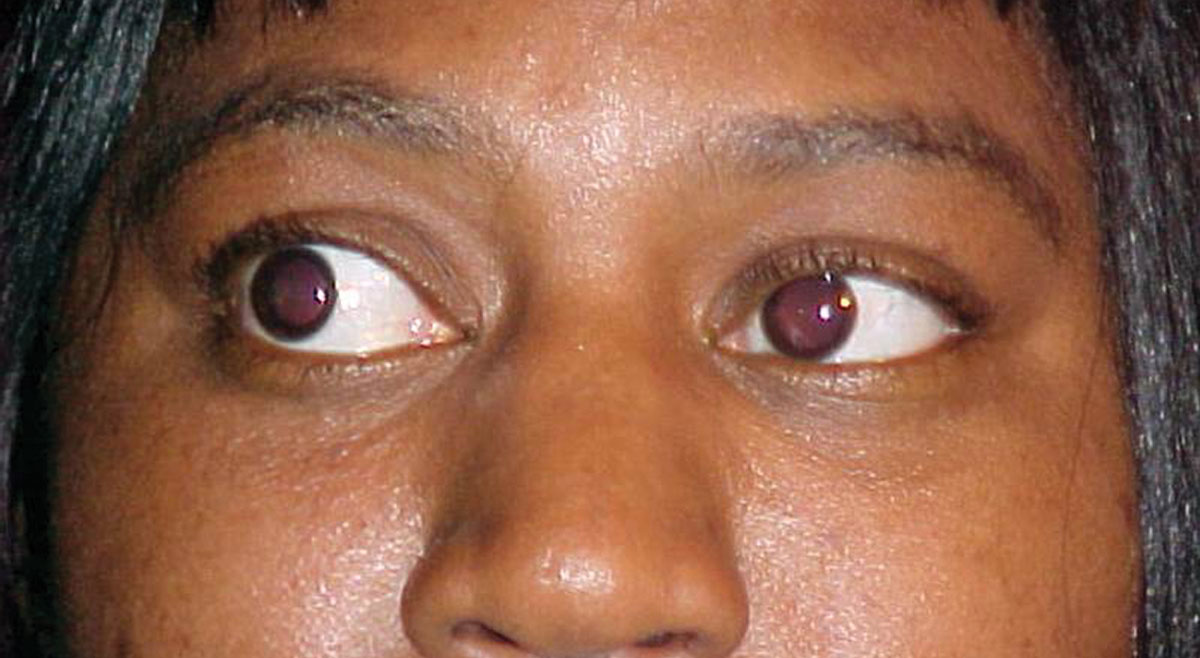 |
|
Although it's questionable whether the results of this study were clinically significant, researchers noted that 38% of patients with TAO improved on doxycycline, while only 16% improved in the placebo group. Photo: Andrew S. Gurwood, OD. Click image to enlarge. |
Thyroid-associated ophthalmopathy (TAO) can seriously negatively affect the lives of those who have it, but even milder presentations—accounting for 70% of all cases—are troubling to patients; unfortunately, this population has been less researched, as there are not even any clinical guidelines for available treatments. One new study conducted across China aimed to improve this shortcoming by testing the use of doxycycline in treating mild TAO. The findings were recently published in JAMA Ophthalmology.
The researchers conducted a placebo-controlled, double-masked prospective study. One hundred patients with mild TAO, characterized by mildly affected orbital soft tissue, were included in the 12-week trial. Subjects were randomly assigned one to one to receive either 50mg of doxycycline or a placebo over the course of the trial.1
Improvement after 12 weeks was assessed by comparing with the baseline a composite indicator of eyelid aperture, proptosis, ocular motility and Graves ophthalmology-specific quality of life (GO-QOL) scale scores.
Results after 12 weeks were modest, with an improvement rate of 38% for the doxycycline group and 16% for the placebo group. Only one instance of adverse events was documented, exhibited as mild gastric acid regurgitation in the doxycycline group.
To contextualize the results into a broader perspective, an invited commentary was published in the same issue by authors unassociated with the study. They point out that the study classified “improvement” as meeting at least one of the four criteria in the study eye without worsening of any item in either eye: reduction of eyelid aperture by 2mm or more, reduction of proptosis by 2mm or more, increase in ocular motility by 8° or more and any deduction or increase on the GO-QOL scale by six points or more.2
When looking at the four criteria and the Ocular Surface Disease Index score individually, though, no significant improvement was found. For the commentary authors, this raises the question of whether the difference of improvement found in the study is truly clinically important, especially since the difference in patient-reported outcome by GO-QOL scores was not significant.
Additionally, the commentary notes that a prior study conducted by the same authors of the study found 62% improvement in patients with moderate-to-severe TAO taking doxycycline. Compared with this study’s 38%, efficacy of improvement is once again called into question. But, the original authors do explain why this might be the case, citing the lower improvement score may be because moderate to severe cases of TAO may have more obvious improvement responses to treatment.
Despite some questioning on the efficacy of this trial, both the commentary and the study seem to agree that doxycycline proves a valid option to treat mild TAO. The study explains that “current therapies for mild TAO, which include observation and local treatment, do not adequately relieve cosmetic disfigurement, eye discomforts or negative impact on quality of life in patients with mild disease. It is urgent to find effective treatments.”1 It seems they have found at least one fairly effective treatment, and the commentators agree, considering that “although the reported efficacy of doxycycline in patients with mild thyroid eye disease was modest, it may still be a worthwhile option to use doxycycline in such patients given the low toxicity profile and low cost of the drug.”2
b1. Pan Y, Chen YX, Zhang J, et al. Doxycycline vs placebo at 12 weeks in patients with mild thyroid-associated ophthalmology. JAMA Ophthalmol. September 29, 2022. [Epub ahead of print]. 2. Zhao J, Esmaeli B. Oral doxycylcine for mild thyroid eye disease. JAMA Ophthalmol. September 29, 2022. [Epub ahead of print]. |

